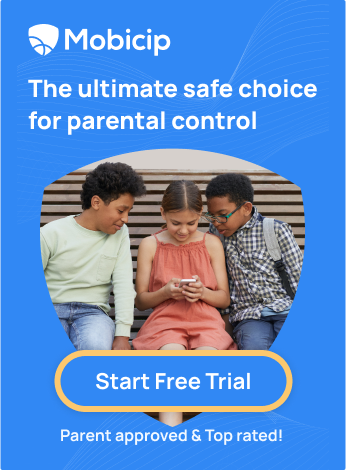Keeping Your Neurodiverse Child Safe Online: A Parent’s Guide

“The web is a powerful tool for equality and opportunity, but it can also be a place where harm is caused if used improperly.”
This quote by Tim Berners-Lee remains true in today’s hyper-connected world, where online interactions are a vital part of our children’s lives. For those of us raising neurodiverse children—whether they have autism, ADHD, dyslexia, or other conditions—the internet can be a valuable resource, but it also presents unique challenges and potential risks.
Protecting our neurodiverse children requires parents to develop personalized strategies, stay proactive in monitoring their activities, and use appropriate tools to create a safer digital experience.
This guide explores how we, as parents, can protect our neurodiverse children online by addressing their unique challenges and developing strategies to create a safer digital environment.
Understanding Neurodiversity
Neurodiversity refers to the natural variation in the human brain that affects how individuals think, learn, and interact. Conditions like autism, ADHD, and dyslexia fall under this spectrum, influencing children’s online behavior in various ways.
- Autism Spectrum Disorder (ASD): Children with ASD often struggle to interpret social cues and navigate digital interactions. With one in every 36 children in the United States diagnosed with autism, according to the Centers for Disease Control and Prevention (CDC), parents must prioritize online privacy and safety for this significant segment of the population. Many kids also experience overstimulation from bright screens or overwhelming content.
- ADHD: Children with ADHD may struggle with impulse control and sustained attention, making them more susceptible to online risks like oversharing or compulsive internet use. Research from the American Academy of Pediatrics reveals that children with ADHD are more likely than their peers to engage in excessive screen time, exposing them to potentially harmful online content.
- Dyslexia: Children with dyslexia may struggle to engage with text-based online content, making them more reliant on multimedia platforms. If we don’t monitor their online activities closely, they may encounter inappropriate or misleading content, which can negatively impact their learning and self-esteem.

From Practice Business
Unique Challenges Faced by Neurodiverse Children Online
“If a child can’t learn the way we teach, maybe we should teach the way they learn.” — Ignacio Estrada
- Sensory Processing Differences: Children with autism or sensory sensitivities may feel uncomfortable with certain types of digital content. Flashing banners, bright lights, and unexpected noises can lead to sensory overload, making online browsing a stressful experience. According to Autism Speaks, 80% of autistic children show some level of sensory sensitivity. As parents, it’s essential to be mindful of the content our children are exposed to, as this helps minimize anxiety and discomfort in their online experiences.
- Social Communication Challenges: Many neurodiverse children struggle to interpret social cues, which can leave them vulnerable to miscommunication or manipulation online. Research from the National Autistic Society indicates that 40% of autistic children find online interactions challenging, increasing their risk of cyberbullying or exploitation. This highlights the importance of us, as parents, teaching our children the nuances of online communication.

From Sign Post
- Executive Function Difficulties: Children with ADHD frequently struggle to manage their time online, resulting in compulsive behaviors. According to the Child Mind Institute, children with ADHD are 30% more likely to struggle with screen time management, and they spend more time on social media and gaming platforms than their neurotypical peers. Common Sense Media discovered that 50% of children aged 8 to 18 spend more than six hours on screens daily. Excessive screen time can have physical and mental health impacts on our kids. Problems like eye strain, headaches, and poor posture can arise from too much screen exposure. Also, overstimulation from constant online activity can worsen ADHD symptoms such as hyperactivity and impulsivity, affecting children’s mood and overall well-being.

Strategies for Promoting Safe Online Behavior
- Set Clear Ground Rules: Setting firm boundaries is essential for neurodiverse children who may struggle to understand limits. Parents can establish clear time limits for online activities, restrict access to specific websites, and create rules for sharing personal information. According to the Family Online Safety Institute (FOSI), while 90% of parents recognize the importance of setting ground rules for internet use, only 40% actually enforce them. By making these rules clear and consistent, we can help our children feel safer and more secure during their online interactions.
- Monitor Online Activities: Monitoring our children’s online activities is vital for ensuring their safety while also respecting their privacy. By keeping an eye on their digital interactions, we can better understand which websites they visit and how much time they spend online. Pew Research found that 39% of parents use parental controls to monitor their children’s online activity. Having regular discussions about our children’s online activities fosters open dialogue and creates a comfortable space for them to share their experiences.

From Pew Research
- Encourage Offline Activities: Encouraging a healthy balance between online and offline activities is essential for neurodiverse children, who may struggle to disconnect from stimulating online platforms. The American Psychological Association (APA) notes that half of children with ADHD struggle to transition from screen time to other activities. By encouraging non-screen-based hobbies like sports, art, or music, we can help our children foster creativity and provide healthy outlets for their energy. This balanced approach enhances their well-being and strengthens family bonds through shared activities.
Recognizing Red Flags
“Just as we teach children to avoid strangers in real life, we must also teach them to recognize dangers online.”
Teaching our children to recognize suspicious behaviours or unsafe situations online is essential for their safety. Neurodiverse children, in particular, thrive when given clear guidelines about what constitutes unsafe behaviour. According to the Internet Crimes Against Children Task Force, one in five children will be solicited by an online predator before turning 18, highlighting the need for early intervention and education in promoting internet safety.
Some common red flags include:
- Unsolicited messages from strangers: Teach digital literacy skills to children to help them understand the importance of avoiding interactions with strangers online for their safety.
- Requests for personal information: Educate children on the importance of safeguarding their personal details, like their name and address, to help ensure their safety online.
- Messages that cause discomfort: Encourage children to trust their instincts and let parents know if something doesn’t feel right.
Regularly reviewing our children’s online interactions can also help us identify any potential red flags before they become serious issues.

From educate2empower
Cyberbullying Prevention
Neurodiverse children, especially those with Autism or ADHD, are more vulnerable to online bullying. According to the Cyberbullying Research Centre, nearly 60% of children with disabilities experience cyberbullying, compared to 30% of their neurotypical peers. This disparity underscores the need for parents to implement targeted prevention strategies to protect children and create a safer online environment.
Identifying Cyberbullying
Parents should watch for changes in their child’s mood or behaviour. A sudden reluctance to go online, a drop in academic performance, or an increase in isolation can all be indicators of cyberbullying. Maintain open lines of communication so that your children feel comfortable sharing their experiences with you.

From extrainnings
Addressing Cyberbullying
Encourage your child to come to you if they are concerned about online bullying. Many platforms allow you to block or report bullies; you should teach your child how to do so.
According to data from StopBullying.gov, 80% of children who report cyberbullying find that blocking the bully improves the situation.
It’s essential to reinforce the idea that they are not alone and that there are steps they can take to protect themselves.
Parental Controls and Filtering Tools
“When it comes to the internet, an ounce of prevention is worth a pound of cure.”
Parental control tools, such as Mobicip, give parents peace of mind by allowing them to manage their children’s online activities, set time limits, and filter inappropriate content. These tools can be especially useful for neurodiverse children who may not fully understand the risks of their online interactions.
- Content Filtering: Filter out websites or apps that contain inappropriate content, ensuring your child is not exposed to harmful material.

- Screen Time Management: Set specific time limits for device use. Research shows that 60% of parents are concerned about the amount of time their children spend online, but only 30% use tools to manage it.

- Activity Reports: With tools like Mobicip, you can access detailed reports on what websites your child visits, how much time they spend on different apps, and more. These insights can inform your discussions about online safety and responsible internet use.

By using parental control tools like Mobicip effectively, you can create a safer online environment for your children while fostering independence and responsible internet use.
Conclusion
As we navigate the challenges of raising neurodiverse children in the digital age, it’s essential to prioritize online safety. Together, we can create a supportive environment that helps our children thrive online while minimizing potential risks.
A valuable step we can take is to explore parental control tools that cater to our unique needs. We encourage you to sign up for a 7-day free trial of Mobicip, a tool designed to enhance our ability to manage our children’s online activities. With Mobicip, you can set appropriate limits and filter out harmful content, making it easier to promote digital literacy for our children.
Let’s work together to provide our children with a safer, more enriching online experience, fostering their independence while protecting them in an ever-evolving digital landscape. After all, “The best way to predict the future is to create it.”





